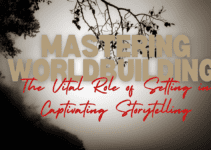Understanding the Young Adult Fiction Genre: What Sets It Apart?

Young adult fiction is a vibrant and dynamic genre that captures the essence of adolescence in all its complexity. What sets Young Adult (YA) fiction apart is not just its target audience but the raw, unfiltered emotions and experiences it explores. Characterized by relatable protagonists who navigate the tumultuous waters of self-discovery, these coming-of-age stories resonate deeply with readers of all ages.
At the heart of young adult fiction novels are themes that reflect the struggles and triumphs of growing up. From identity and friendship to love and loss, YA fiction delves into the very core of what it means to transition from childhood to adulthood. The characters often face challenges that force them to confront their beliefs, question societal norms, and ultimately find their place in the world.
The beauty of young adult literature lies in its ability to speak to universal truths while still being grounded in specific experiences. Whether it’s dealing with family dynamics or grappling with mental health issues, these narratives provide a safe space for readers to explore their own feelings and thoughts. As we dive into this genre, we uncover not just stories about young people but also reflections on humanity itself—making YA fiction an essential part of our literary landscape.
Key Themes and Trends in Young Adult Fiction That Resonate with Readers
Young adult fiction has become a treasure trove of themes that resonate deeply with readers navigating the complexities of adolescence. One of the most compelling threads in this narrative is identity exploration. Characters embark on journeys to discover who they are, often grappling with questions of self-worth, belonging, and purpose. This theme strikes a chord with readers who see their own struggles reflected in these stories, making them feel less alone in their quest for identity.
Mental health in YA literature has emerged as another pivotal theme that captures attention and sparks conversations. With increasing awareness around mental health issues among young people, authors are bravely tackling topics like anxiety, depression, and resilience. These narratives not only validate the experiences of many readers but also foster empathy and understanding within broader communities.
Diversity and representation have taken center stage in young adult fiction as well. Readers crave stories that reflect the rich tapestry of human experience—narratives featuring characters from various backgrounds, cultures, and identities. This push for inclusivity enriches the genre while empowering marginalized voices to tell their stories.
Romance remains a beloved element within YA fiction; however, it’s evolving beyond mere tropes into nuanced explorations of love that include healthy relationships and consent. The romantic dynamics between characters often mirror real-life challenges faced by teens today—making these tales relatable and impactful.
Lastly, friendship dynamics play a crucial role in shaping young adult narratives. The bonds formed during these formative years can be both uplifting and tumultuous; they provide fertile ground for exploring loyalty, betrayal, and personal growth. Readers find solace in these friendships as they navigate their own social landscapes.
In essence, key themes like identity exploration, mental health awareness, diversity and representation, romance nuances, and intricate friendship dynamics not only define contemporary young adult fiction but also create an emotional connection that resonates powerfully with readers from all walks of life.
Creating Relatable Characters: The Heart of Young Adult Fiction

Creating relatable characters is truly the heart of young adult fiction, breathing life into narratives that resonate deeply with readers. At its core, character development in YA is not just about crafting individuals; it’s about forging connections. Relatable protagonists are essential because they mirror the tumultuous journey of adolescence—full of self-discovery, heartache, and triumph.
These characters must possess authentic voices and perspectives that reflect the diverse experiences of young adults today. Whether it’s navigating friendships, grappling with identity, or confronting societal pressures, these elements create a tapestry of emotions that readers can see themselves in.
Moreover, character arcs play a pivotal role in this genre; they showcase growth and transformation that inspire hope and empathy. As protagonists evolve through their struggles and triumphs, readers embark on a journey alongside them—one that not only entertains but also encourages introspection and understanding. In crafting these relatable characters, we invite young adults to explore their own stories while finding solace in the shared experience of growing up.
The Importance of Setting: Crafting Authentic Environments for Your YA Story
Setting is not just a backdrop in young adult fiction; it is the heartbeat of your story, pulsating with life and authenticity. When we delve into world-building for young adults, we tap into the profound ability to craft environments that resonate deeply with our readers. Whether you’re navigating the everyday struggles of contemporary settings or soaring through the limitless realms of fantasy, creating immersive worlds for teens is essential to drawing them into your narrative.
In contemporary YA fiction, settings reflect the realities and challenges faced by today’s youth—think bustling city streets filled with both dreams and disappointments, or small towns where secrets simmer beneath the surface. These relatable environments allow readers to see themselves in your characters’ journeys, fostering a connection that can spark inspiration and empathy.
On the flip side, fantasy settings provide an exhilarating escape from reality. They invite young adults to explore uncharted territories filled with magic and wonder while still mirroring their internal struggles—be it identity crises or friendship dilemmas. The key lies in ensuring these fantastical realms are grounded by relatable emotions and experiences.
Ultimately, whether you choose a contemporary or fantasy setting, remember that authenticity reigns supreme. Your world should feel lived-in; every detail should serve to enhance character development and plot progression. So dive deep into your imagination! Crafting authentic environments will not only enrich your story but also create lasting memories for your readers as they journey alongside your characters through every twist and turn.
Navigating Publishing Trends: How to Get Your Young Adult Novel Noticed
As we dive into 2025, the landscape of young adult (YA) fiction is evolving at an exhilarating pace. Navigating these publishing trends is crucial for any aspiring author eager to make their mark. The rise of diverse voices and unique narratives has opened doors for stories that resonate deeply with today’s youth. To get your YA novel noticed, it’s essential to stay ahead of the curve—understanding what readers crave and how they consume content.
Marketing your YA book requires a blend of creativity and strategy. Social media platforms like TikTok and Instagram are more than just fun; they are powerful tools for connecting with your audience. Engaging book trailers, relatable posts, and interactive content can spark interest in your novel long before it hits the shelves.
The debate between traditional vs. self-publishing continues to be a hot topic among young adult authors. Traditional publishing offers credibility and access to established distribution channels, but self-publishing grants you complete creative control over your work and marketing efforts. Each path has its merits; the key is to choose one that aligns with your vision as an author.
In this vibrant world of YA literature, passion fuels success—so harness it! Embrace these trends, engage with your readers authentically, and let your voice shine through every page you write. Your story deserves to be heard!
The Future of Young Adult Fiction: Embracing Change and Innovation as an Author
The future of young adult fiction is poised for significant transformation, and authors must embrace change and innovation to stay relevant. As we observe ever-evolving reader demographics, it’s clear that today’s young adults are not just passive consumers; they are active participants in the narrative landscape. They crave authenticity, diversity, and stories that reflect their multifaceted identities.
Future trends in young adult literature will undoubtedly lean towards inclusivity and representation, as readers demand narratives that resonate with their experiences. Authors must adapt by weaving diverse characters and perspectives into their stories, ensuring they capture the essence of this generation.
Moreover, digital platforms for young adult stories are revolutionizing how content is consumed. With the rise of e-books, audiobooks, and interactive storytelling apps, writers have unprecedented opportunities to reach audiences directly. It’s imperative for authors to leverage these platforms not only to distribute their work but also to engage with readers in innovative ways.
To thrive in this dynamic environment, authors must be proactive in understanding these trends and incorporating them into their writing strategies. The future belongs to those who are willing to innovate—so let’s seize this moment and redefine what young adult fiction can be!
Conclusion: Embrace Your Passion and Write Authentic Stories That Speak to the Heart of Young Adults!
LET’S CONNECT!
There are many ways to connect withAmy Stewart Bell. We would love to know what you think and any of the topics we offer. We welcome your comments and want to interact with you!
If you haven’t yet, grab your copy of Once Captured, the first in Amy’s Captive Series. And now you can grab the second in the series,Uncharted Captivity, as well!
You can also connect in other areas. Join us on Instagram @AmyWritesAll, on X@AmyWritesAll, and on Facebook @AmyWritesAll.
Be sure to join our community newsletter; you will get even more inside info!







